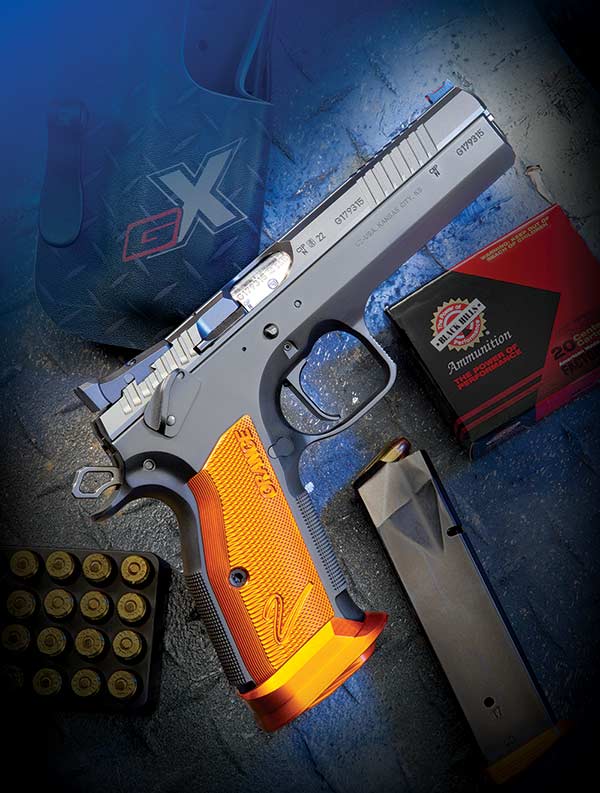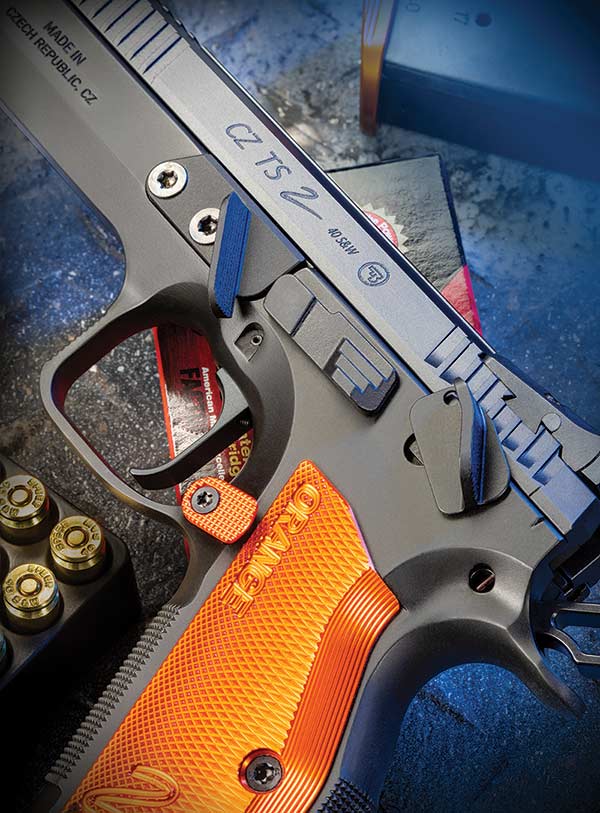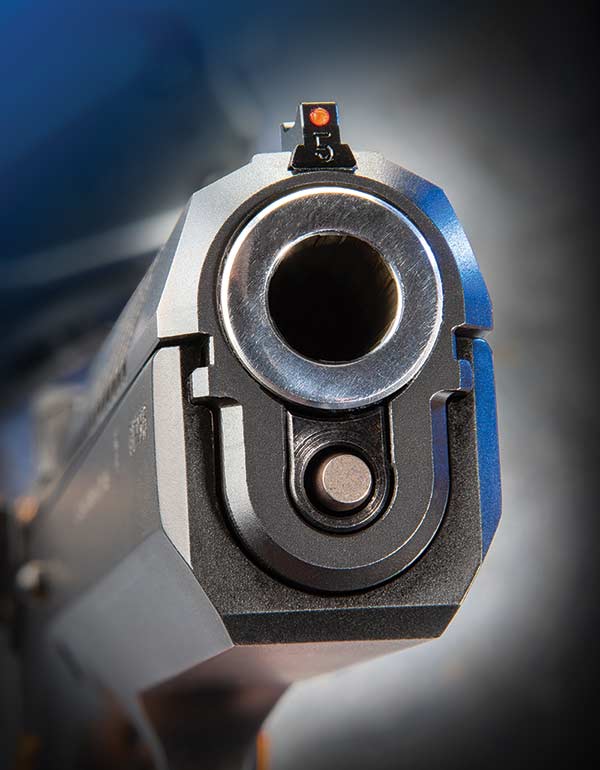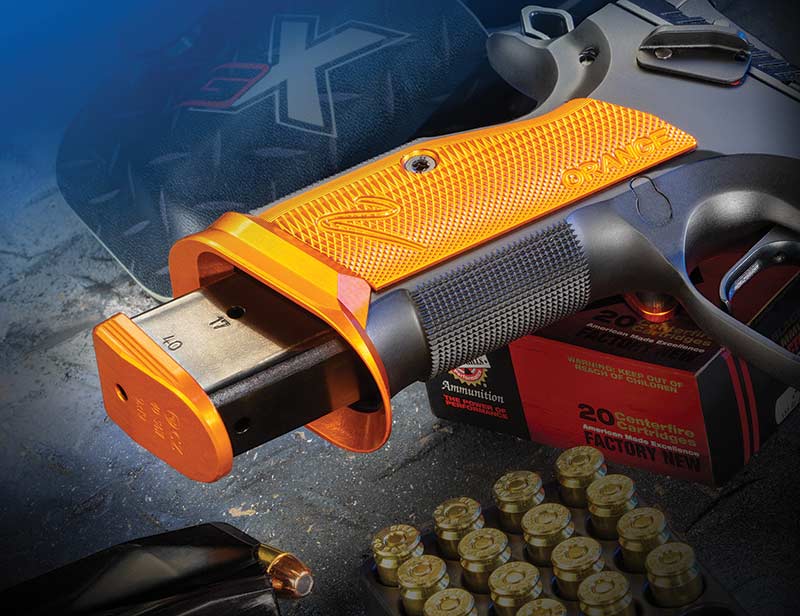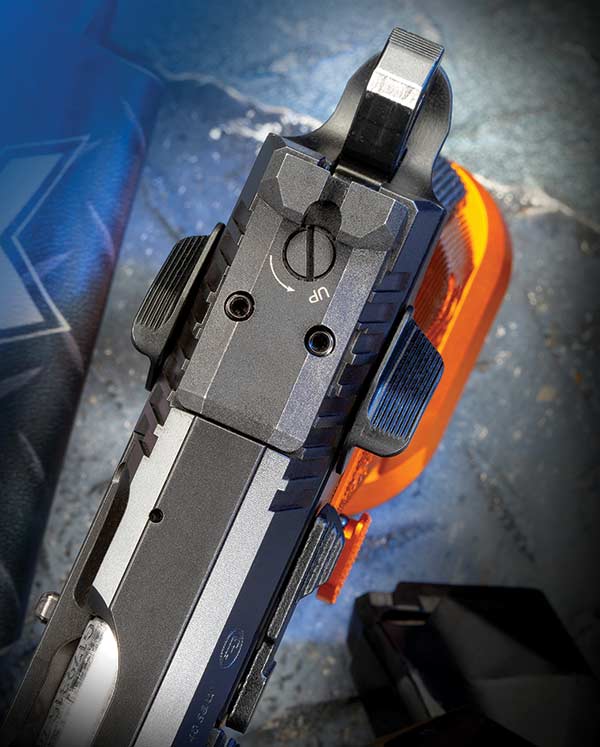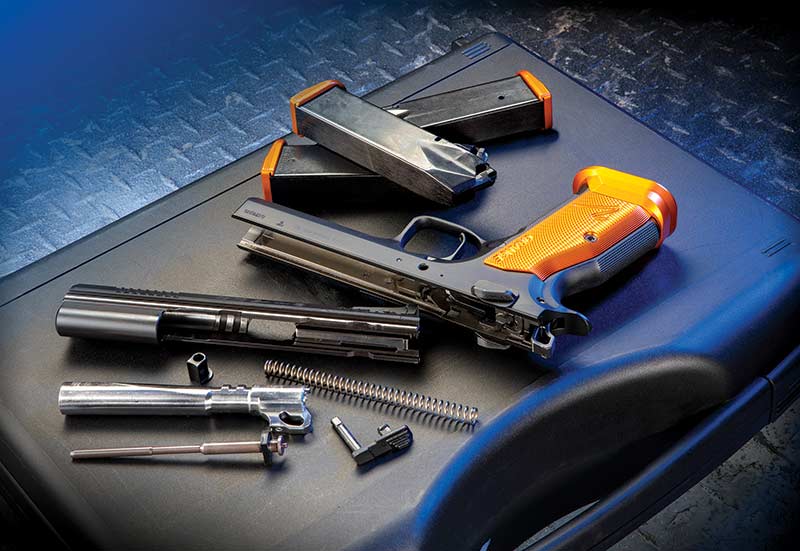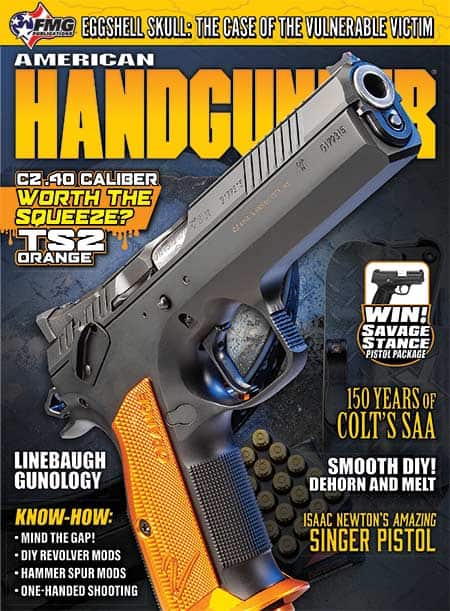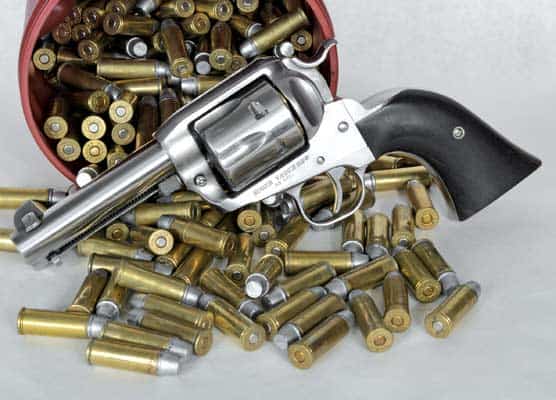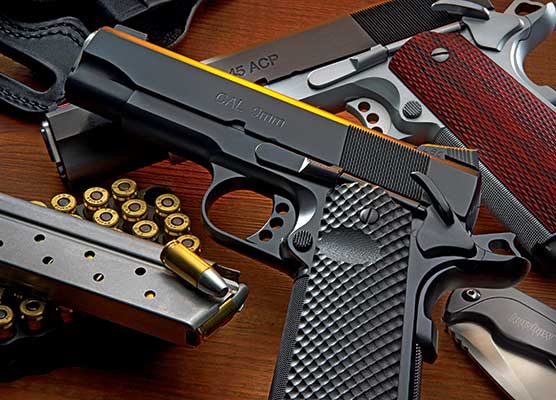Worth The Squeeze
CZ .40 Caliber TS2 Orange
I’m not sure who at CZ came up with the idea of color-coding their match pistols, but it’s sure easier than remembering yet another sequence of numbers. In this case, I’m referring to the Orange version of the TS2, developed partially by shooters on the CZ Shooting Team to be match-capable out of the box for those who want to compete. And have mercy, do these things shoot.
CZ also offers a Blue model with different features and recently discontinued the Green, of which the Orange seems to be an update. One thing to know at the outset: This isn’t just a reworked CZ75, magnificent as those pistols are. The TS series guns (short for Tactical Sport) were introduced in 2005 as a successor to the Standard IPSC model and are dedicated competition guns using different frames, slides and other components. This includes the magazine, so if, like me, you find yourself staring covetously at those 20-round TS2 mags for use in your ’75, I’ll save you the disappointment: They don’t fit.
What’s Different?
The double-action is gone, replaced with a single-action-only trigger mechanism that retains the usual CZ roll in the break but with far less poundage. My test Orange broke at 1 lb., 15 oz. and change, while a Blue I spent time with managed 1 lb., 5 oz., far lighter than the 3 lb., 12 oz. trigger on my CZ75B Omega.
Conversely, the gun itself is much heavier, weighing in a pound more than a ’75, a weight gain of some 50%. No doubt, some of this is from the bull barrel of the Orange, which also soaks up recoil, helped along by its added length (5.28″ instead of 4.6″) and the full-length dust cover that goes almost to the muzzle. And it’s not just the dust cover: One of the CZ distinctives is that the slide rides inside the frame rails instead of outside like the vast majority of other pistols, which means the slide rails stretch the entire length of the gun, greatly increasing bearing surface. It also makes for a lower profile slide, which is made even more so on the TS2 by angling the sides of the slide inward toward the shallow rib running the length of the top of the slide, á la the Shadow 2, instead of having a flat on either side like most handguns, including the ’75.
Ergonomics
Low-profile, but not hard to grasp: CZ saw to that with deep-ish square cocking serrations in the rear and a similar set near the front on both the sides and top of the slide for those who are less leery than I of having their fingers close to the muzzle.
The grips are brightly anodized aluminum checkered with an interesting overlapping radial pattern, while the front and rear of the receiver have coarse checkering that my dial caliper is calling 18 lines per inch. Checkering that rough can usually shred those tender fingers — ask anyone who’s spent a week at Gunsite with a sharp-checkered 1911 — but the tops of the diamonds have been slightly rounded. It will definitely do its job of keeping the gun firmly in your hand but do it comfortably. In 500 rounds (plus another 500+ through a Blue 9mm), it never bothered me.
Other ergonomic changes consist of a prominent “gas pedal” thumb rest mounted just forward of the slidestop by a sturdy pair of Torx screws, an enlarged checkered mag catch in orange aluminum to match the grips and a prominent ambidextrous safety. This last is mounted somewhat higher on the Orange than on other models. While I didn’t have trouble using it, my medium-sized hands found the usual position (such as on the Blue pistol) more intuitive to use. Similarly, although the mag catch is nice and positive, it didn’t work well for me shooting left-handed, where the bottom edge dug into my finger just below the second knuckle. That edge has been courteously beveled at the factory, but the dimensions just didn’t fit my hand. If I were keeping this gun, I’d spend a few minutes at the 3M wheel trimming it just a bit, as I regularly shoot with either hand. Right-handed, no problem.
The test gun arrived with a thoughtful complement of four 17-round magazines, each with an orange aluminum base pad that is likely to survive the rigors of competition better than plastic and chambered in .40 S&W. While the caliber has fallen a bit out of favor as of late, it still does what it’s always done: Packs more punch than 9mm, which can matter on steel plates, and holds more rounds than a .45. Plus, it makes Major.
Ammo Time
Black Hills provided 500 rounds of its 155-grain JHP for the test, which I enthusiastically burned through the Orange in short order. Like the Blue, which consumed over 500 rounds, there were no failures to feed. One of the Blue magazines stopped locking the slide back, and I took it out of rotation: There were no other malfunctions of any kind with either pistol. The large orange magwell made reloads fast and positive, and the aluminum showed no scratches or scuffs after the test, suggesting it should survive the hard use of getting mags slammed into it over and over during matches.
As it arrived, the Orange hit a bit low. Nonetheless, once I took the first couple rounds to figure out holdover, I could put the rest of the mag onto a 14″ steel plate at 80 yards, mag after mag. Since I tend to focus on defensive pistols, I don’t put in much time with gas pedals, but the broad thumb rest made it simple to lock the gun into place, and recoil was minimal. Combine that with the light trigger, and it’s easy to shoot well. Despite the usual recoil of the .40 — often more than the .45 — I was able to make consistent 50-yard hits on the same steel target surprisingly quickly. If you’re used to shooting polymer pistols, however, get ready. The Orange’s easy-shooting characteristics partially result from its weight, so it may be an adjustment. Or just do a few more pushups.
Sighting Observations
While the mechanical interface part of the gun is fabulous, I had to focus harder than usual on the sight picture: The front fiber optic blade is a bit narrow, which helps for fast shooting, since it’s easier to slot that tall, narrow post down into its notch than it is to line up one that’s broad and doesn’t allow as much light on either side. The difference in dimensions, though, between the height of the sides and the narrowness of the top often led me to focus more on the windage than elevation. Simply put, it’s easier to center the post than it is to level it. Once I realized what I was doing, a strong focus on the top of the sight improved my accuracy. At closer ranges, you’re not likely to notice it, and the sight is a good choice for the sort of gun games for which the TS2 is intended.
The rear sight is click-adjustable for elevation and drift-adjustable for windage. Since I didn’t want to take a punch to the rear sight, I just brought the elevation up, and while the bullet hit barely left at a distance, I was still able to make good hits out to 100 yards on smaller targets. Not every shot, but some back-to-back. On paper, using the Ransom Multi Cal Steady Rest, my best five-shot group at 25 yards was 2″; following the common practice of dropping the worst shot from the group, I put four into an inch in a different group.
A dot interface would be a welcome addition and make it easier for most shooters to get closer to the limits of the gun, but the IPSC Standard Division and USPSA Limited classifications for which the Orange is intended don’t allow optics. That may be changing with USPSA Limited, but for now, it would not make sense from a cost perspective for CZ to include a feature the intended audience can’t use. But maybe they’ll do a Red model next….
I’ve put about 1,500 rounds through various CZs in the last few months, and they’ve all punched above their weight. This one matched everything I’ve come to expect: It works, it hits, it handles well and is carefully thought out for what it’s for. With a suggested retail a little over $2,000, it’s not cheap, but this Orange’s juice is worth the squeeze.
For more info: CZ-USA.com, RansomRest.com, Black-Hills.com



